Downtown Building Grows Apartments
Century Building would (mostly) convert from offices to 50 low-income residential units.
A downtown office building would be partially converted to apartments under a proposal by Keystone Development. Built in 1925 and located at 808 N. Old World Third St., just north of Wells St., the Century Building would be transformed by Keystone, which would convert its top four floors to 50 apartments. The Century Building, which is considered part of the Westown neighborhood, is currently home to a diverse number of first-floor retail tenants and smaller office tenants on the upper floors.
Keystone’s plans are contingent on receiving federal low-income housing tax credits from the Wisconsin Housing and Economic Development Authority (WHEDA). According to its application, Keystone would reserve 42 of the 50 units for qualifying low-income tenants. In exchange, WHEDA would allocate $447,169 in credits to Keystone, which could either apply those credits to their own taxes or sell them. Keystone, an Oshkosh-based developer led by Cal Schultz, would acquire the building from a local investment group led by Ron San Felippo.
The eight-story building has 111,894 square-feet of space, and is classified as a “Class C” office building, according to city records. The building has a number of first-floor commercial tenants, including a George Webb restaurant, 414 Glass & Grooves store, Quality Optical eye-care studio, hair salon, convenience store and a popular Vietnamese & Hmong sandwich shop Xankia.
Ald. Bauman Not Thrilled
Despite the lack of housing in the area, the proposal isn’t getting glowing reviews from downtown alderman Robert Bauman, who is also a tenant of the building.
Bauman is concerned about the number of office conversions taking place downtown, including at the Germania Building and Northwestern Mutual, and their effect on the one- and two-person “classic small businesses” that rely on “low-rent commercial space” in the central business district. “It would be one thing if the building was empty,” he notes of the Century Building, but “it’s pretty well full.” He says Downtown has lost employers to the suburbs as a result of similar conversions.
Bauman adds he is “all in favor of residential” for the area and has just the spot for it: “The entire vacant lot across the street.” That lot was cleared as part of a failed urban renewal effort decades ago.
But because the proposed project complies with zoning, “the city has no real say in this,” Bauman notes. A developer’s dream, a politician’s worst nightmare.
Milwaukee history buffs will note the Century Building has one of the last manually operated, public elevators in the city. OnMilwaukee.com did an informative profile on the last two operators in early 2012, when operator Jim Wodke was about to celebrate his 20th year on the job at the Century Building. And he’s still there today. Will the elevator be modernized to eliminate his job? We were not able to reach Schultz to ask.
Visitors and passersby will note the numerous, well-preserved architectural details of the building. The lobby still retains the elegance and original layout from when it opened. The building’s facade and cornice still contain much of the original ornamentation (see our gallery). The first-floor facade has clearly been significantly altered over time, but not to such a point that it couldn’t be restored in an aesthetically pleasing manner. A self-guided tour of the building reveals that many of the floors have been substantially modified (most visibly with drop ceilings), but a number of interior doors that could be original to the building are still in use. All-in-all, for a building of its age and class, it’s in impressive shape. The building is not historically designated by the city, state or federal government.
Other Milwaukee Keystone Projects
This won’t be Keystone’s first foray into the Milwaukee market, nor its first adaptive reuse project. The firm acquired the building that formerly housed Antiques on Second in November and is working to convert that building to 55 apartments. That project will be known as the Shoe Factory Lofts when complete. Keystone is making use of low income housing tax credits and historic preservation tax credits to help finance that project.
The firm has also developed the Ridgewood, Westridge and White Birch apartments on the city’s northwest side. All of these projects were built with low-income-housing tax credits.
Building Photos
Exterior Photos
Political Contributions Tracker
Displaying political contributions between people mentioned in this story. Learn more.
- September 18, 2014 - Robert Bauman received $386 from Ron San Felippo
Eyes on Milwaukee
-
Church, Cupid Partner On Affordable Housing
 Dec 4th, 2023 by Jeramey Jannene
Dec 4th, 2023 by Jeramey Jannene
-
Downtown Building Sells For Nearly Twice Its Assessed Value
 Nov 12th, 2023 by Jeramey Jannene
Nov 12th, 2023 by Jeramey Jannene
-
Immigration Office Moving To 310W Building
 Oct 25th, 2023 by Jeramey Jannene
Oct 25th, 2023 by Jeramey Jannene


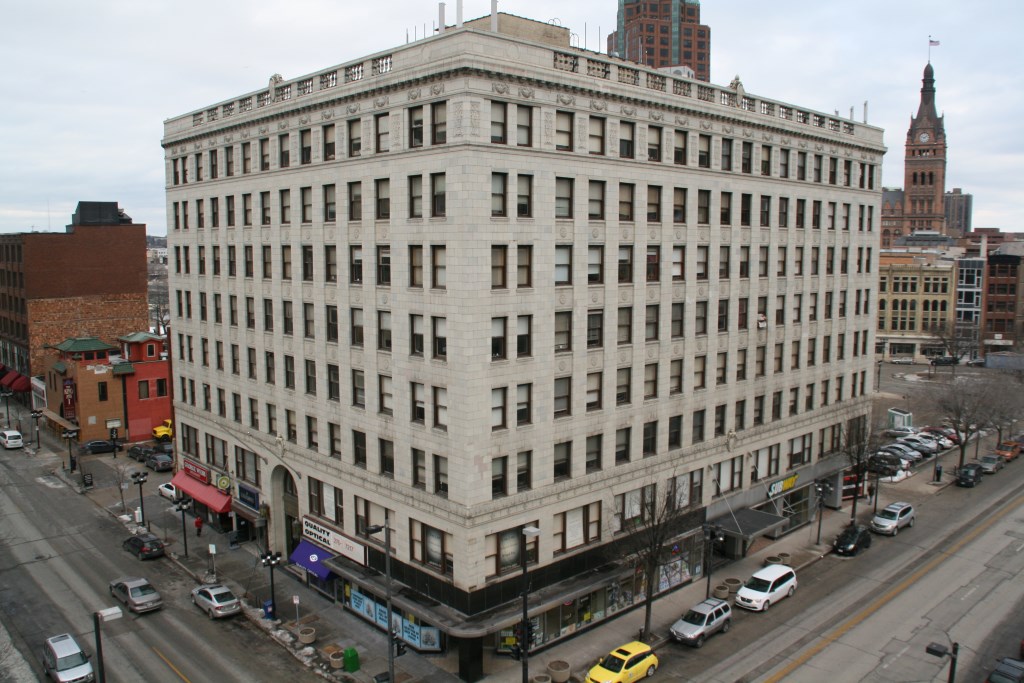
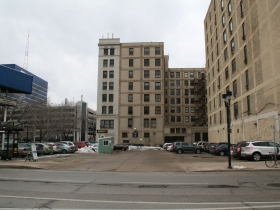
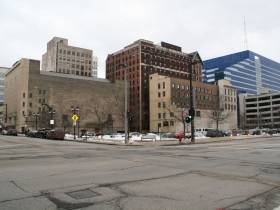
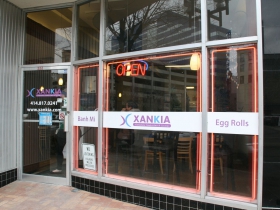
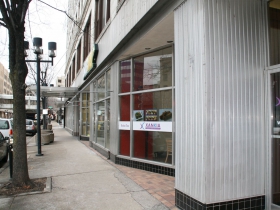
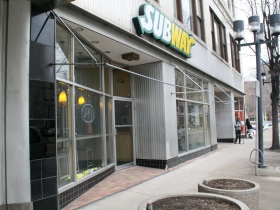
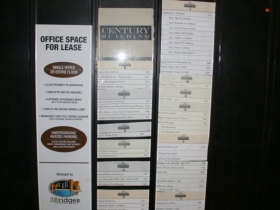
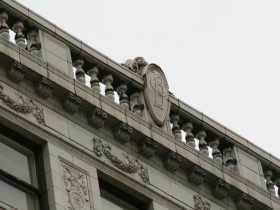
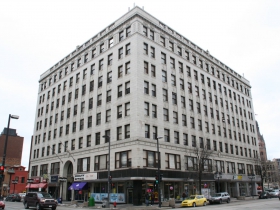
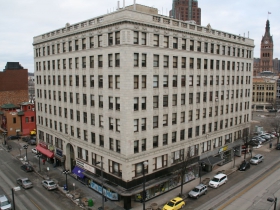

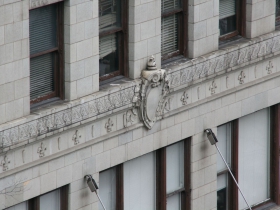
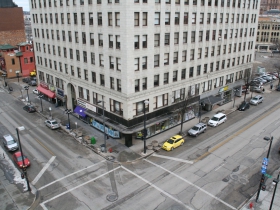



















When a large number of units are occupied by low income families in one concentrated area, there often is nothing but trouble. A percentage of them have a tendency of not getting along with each other. Sprinkle them through out the building with the retail renters, the polite habits may rub off. Here in the city of Waukesha, we have a few concentrations of apartments of low income residents. The authorities know these areas well. I hope that the developer of this downtown
project does not have his plans locked in place yet. Good Luck city of Milwaukee.
It baffles me that his gem is not on any historic register, yet some old foundry along the river on the Walker’s Point/Third Ward border was! Hopefully the buyer will restore the building respectively and meticulously, there are many elements that are worth saving. Dare I say the reason Bauman is not supportive of the conversion is because the majority of the project would be reserved for low-income residents (P.S. is this the best descriptive term, low-income has such negative connotations, I prefer ‘Affordable Housing’ myself). I think if a developer came in with a plan to convert it to high-end luxury apartments, he would be 100% on board. I think it adds a good mix of residents, especially since projects like The Buckler and MKE Lofts are priced way out of budget for young professionals/millennials like myself, who want to live downtown but can’t afford it.
Ack. Izzy, I spent a good 30 minutes last night online checking to see of “low-income housing” was the best term to use. I had the same reaction you did. The JSOnline.com article referred to it as “below market rate” (BMR) rentals, which I prefer and am more used to hearing. “Low-income” sounds judgmental and “poor,” and I wondered about distinctions between “low income,” “moderate income” and “affordable housing.”
Needless to say, its a hornet’s nest of terminology out there. WHEDA does, indeed, refer to grants for projects involving “low-income housing.” And, I never found an answer to the question as to distinctions between the various other terms. Low-income refers to households that earn no more than 60% of an area’s median income. In San Francisco, where I lived last before moving to Chicago, that is also the definition of eligibility for BMR rentals and purchases. However, at least in that crazy market, BMR is hardly low-income. It is solidly middle-class!
Given what the current downtown Milwaukee market is “bearing” in terms of higher rents for “luxury” apartments, I wondered of if “low-income” was the right term.
Thanks for the comments.
I used low-income housing because that’s the exact terminology on the tax credits they’re applying for.
Noted, I just cringe at that term, thanks for the clarification Jeramey. I do enjoy reading your columns, and in no way was trying to imply that it was an error on your part. None the less, I am excited to see more investment west of the river. Now if only someone would step up and renovate the Chalet, personally having lived there for over a year, it is outdated and could use some investment. It has great views going for it, and is a good candidate for redevelopment.
I agree with the alderman Robert Bauman that the Century Bldg should be renovated and kept an office building. It would serve Milwaukee to better to renovate the building to service the Milwaukee Chamber of Commerce, African American Chamber of Commerce, Hispanic American Chamber of Commerce, Asian American Chamber of Commerce, American Women Chamber of Commerce, Jewish American Chamber of Commerce, meeting rooms and etc. This building could bring the Milwaukee communities closer and enhance our city image as a progressive entity to be reckon with across the nation and hopefully throughout the world.. The location is perfect and will service the western part of downtown well, This is jewel that we must preserve and allow our city to shine and help erase our image as being one of US most segregated city, but a city with many ethnics group and cultures working side by side. I too, will like to have space set aside for several three to 4 stars restaurants along with preserving George Webb as a tenant.